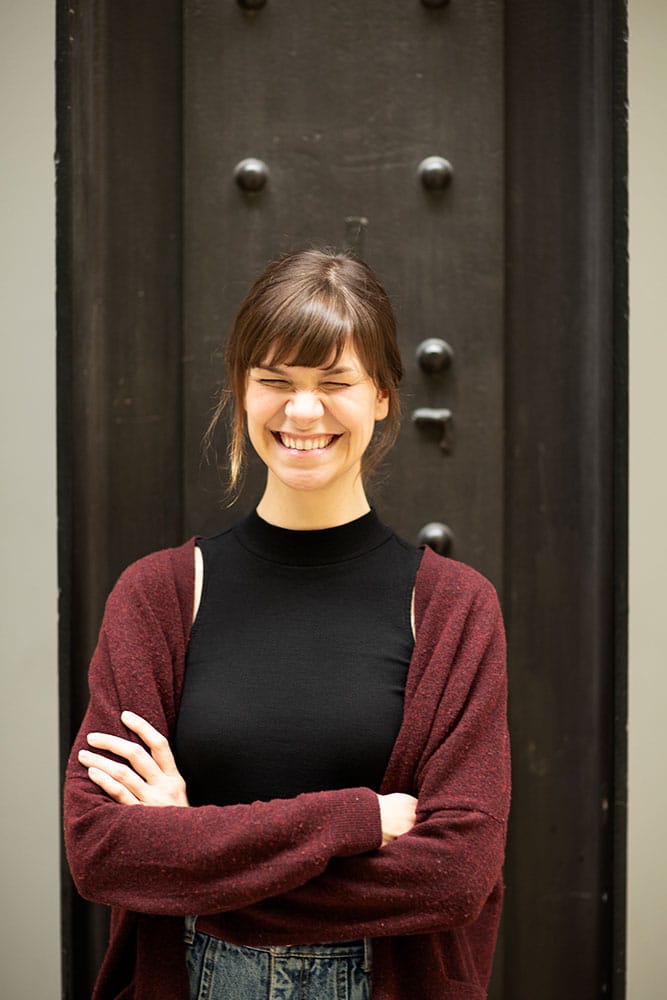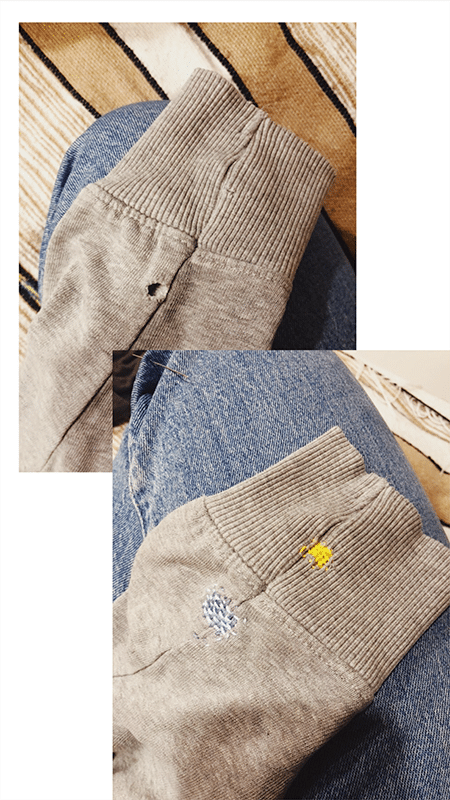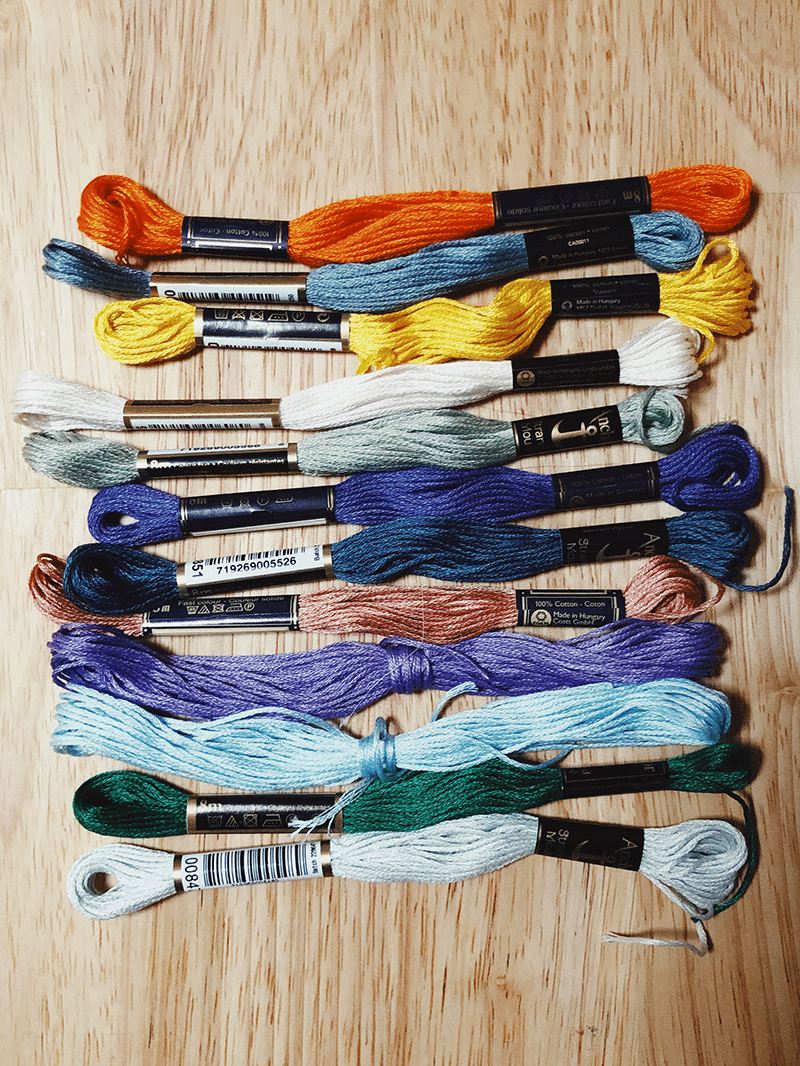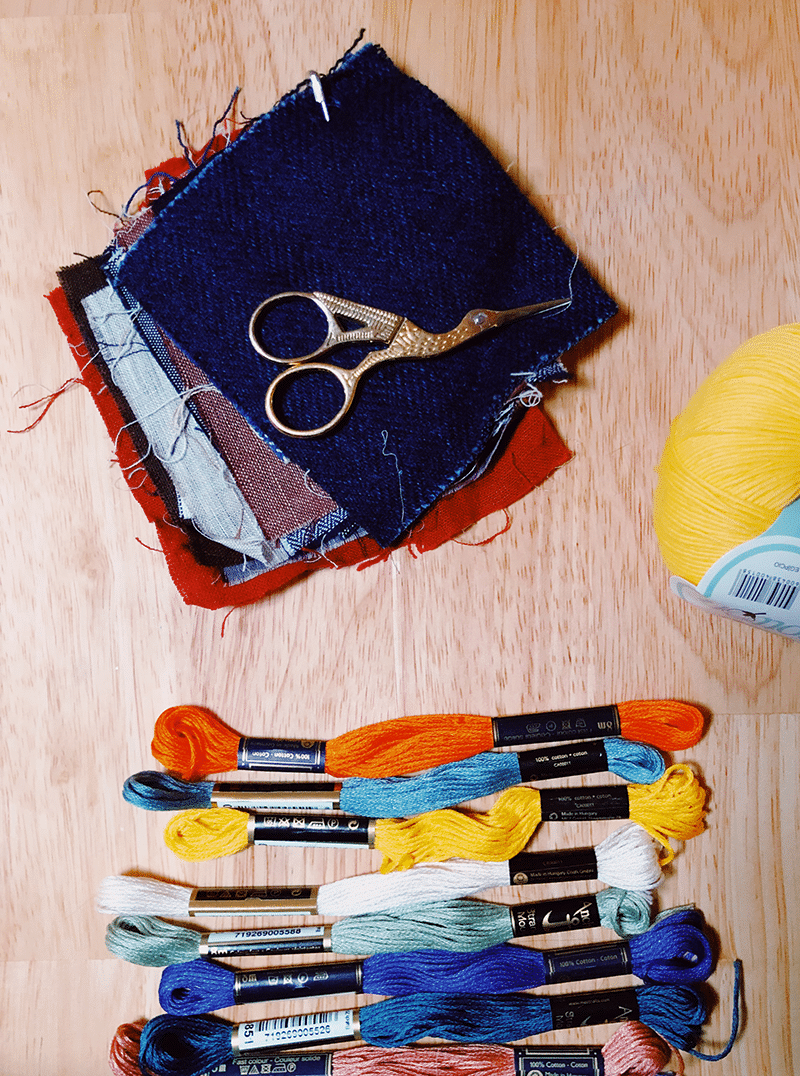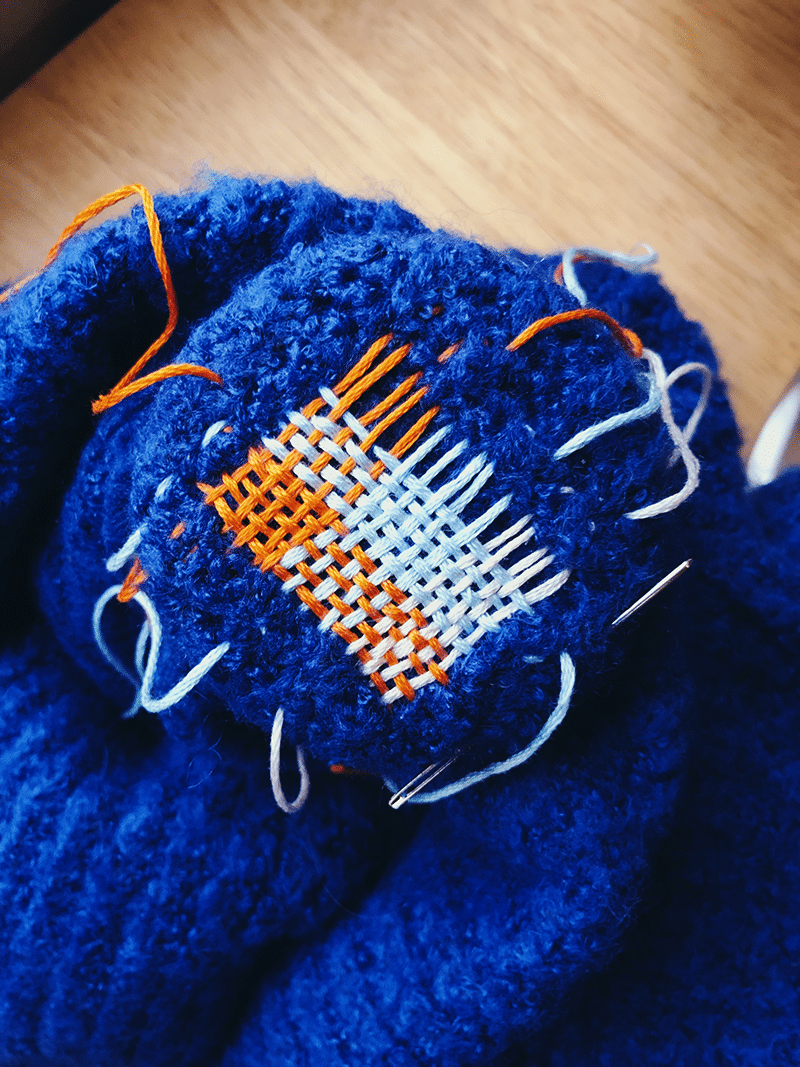Visible Mending Workshop
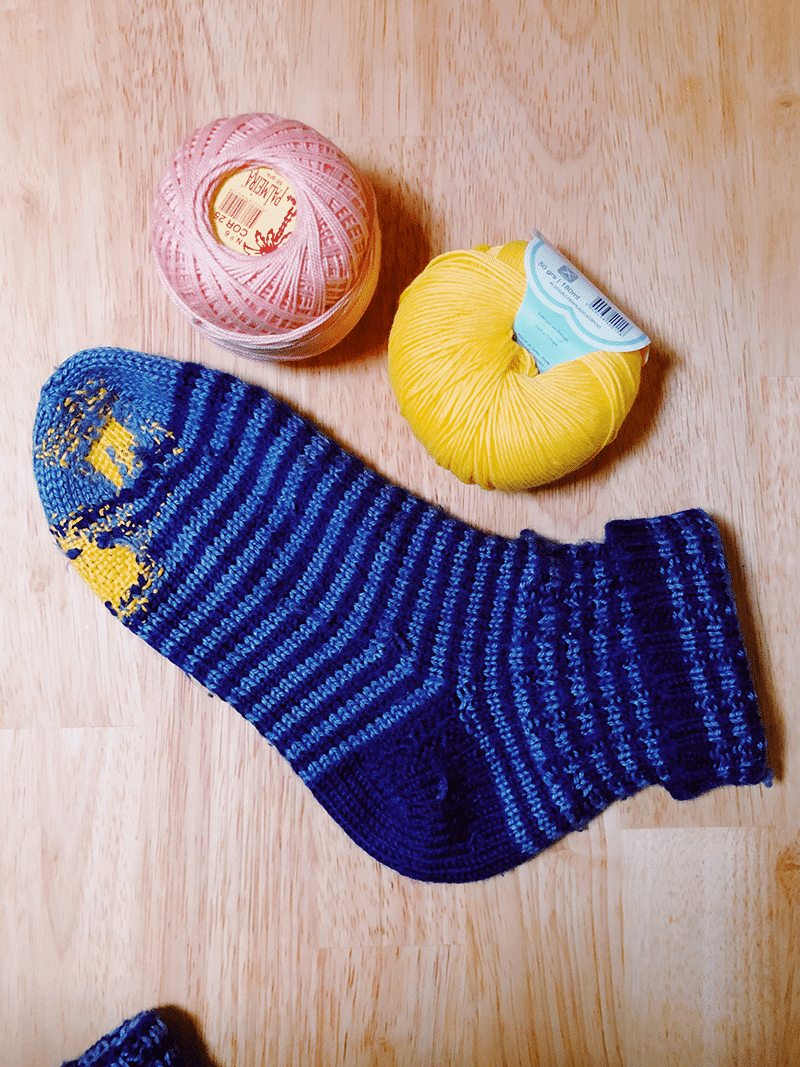
In this workshop you will learn how to fix holes in your favourite clothes and how to mend them in a way that makes them look even better than before. We will be learning the basics of ‘darning’. Darning is a sewing technique for repairing holes or worn areas in fabric or knitting using needle and thread. It is often done by hand, but it is also possible to darn with a sewing machine. In this workshop we will be learning how to hand darn. This technique uses a simple running stitch in which the thread is “woven” in rows along the grain of the fabric, reversing direction at the end of each row, and then filling in the framework created, as if weaving. Darning is a traditional method for repairing fabric damage or holes that do not run along a seam, and where patching is impractical or would create discomfort for the wearer, such as on the heel of a sock.
This workshop is for you if …- you want to learn how to mend clothing- you are interested in upcycling- you want to learn how to extend the life of your clothes- you are interested in sustainable living and slow fashion
What to bring:- 1-3 items of clothing that have holes or worn patches (think knitwear with moth holes, cotton sweaters or t shirts, socks, tote bags, gloves, anything with a hole but no sportswear/activewear or anything entirely made of stretch fabric or polyester) Note: if you don’t have anything to mend yet, you can also bring an old t-shirt or sweater (it doesn’t have to have holes in it)- a pair of small scissors- a needle threader (optional)- a darning tool (only if you have one at home, usually in the shape of a wooden egg or mushroom)- a simple hair tie
What we will provide:- darning needles in different sizes- darning thread in a variety of colours- selection of patch fabric- a basic mending kit that you can take home with you 🙂
About Lisa:Lisa is a UX Designer by day and a mender and upcycler by night. A few years back she challenged herself to make her entire wardrobe ‘fast fashion free’ and turned to second hand and vintage shopping. It quickly became a passion. But buying secondhand sometimes means amendments or repairs, especially if the piece of clothing has been particularly ‘pre-loved’. Having learned the basics of sewing from her mother she started fixing and changing her own clothes – be it her favourite pair of denims (which you will most definitely get to see (look for the bum flower patch!) or a pair of her nan’s knitted socks. Knitting, sewing and repairing are skills that usually get passed down from generation to generation and she is keen to continue the tradition by teaching as many people possible and empowering them to take care good care of their clothes and therefore the planet 🙂 Because the most sustainable piece of clothing is the one you already have!
If you have any questions, send Lisa a message to hello@lisamatzi.com!
